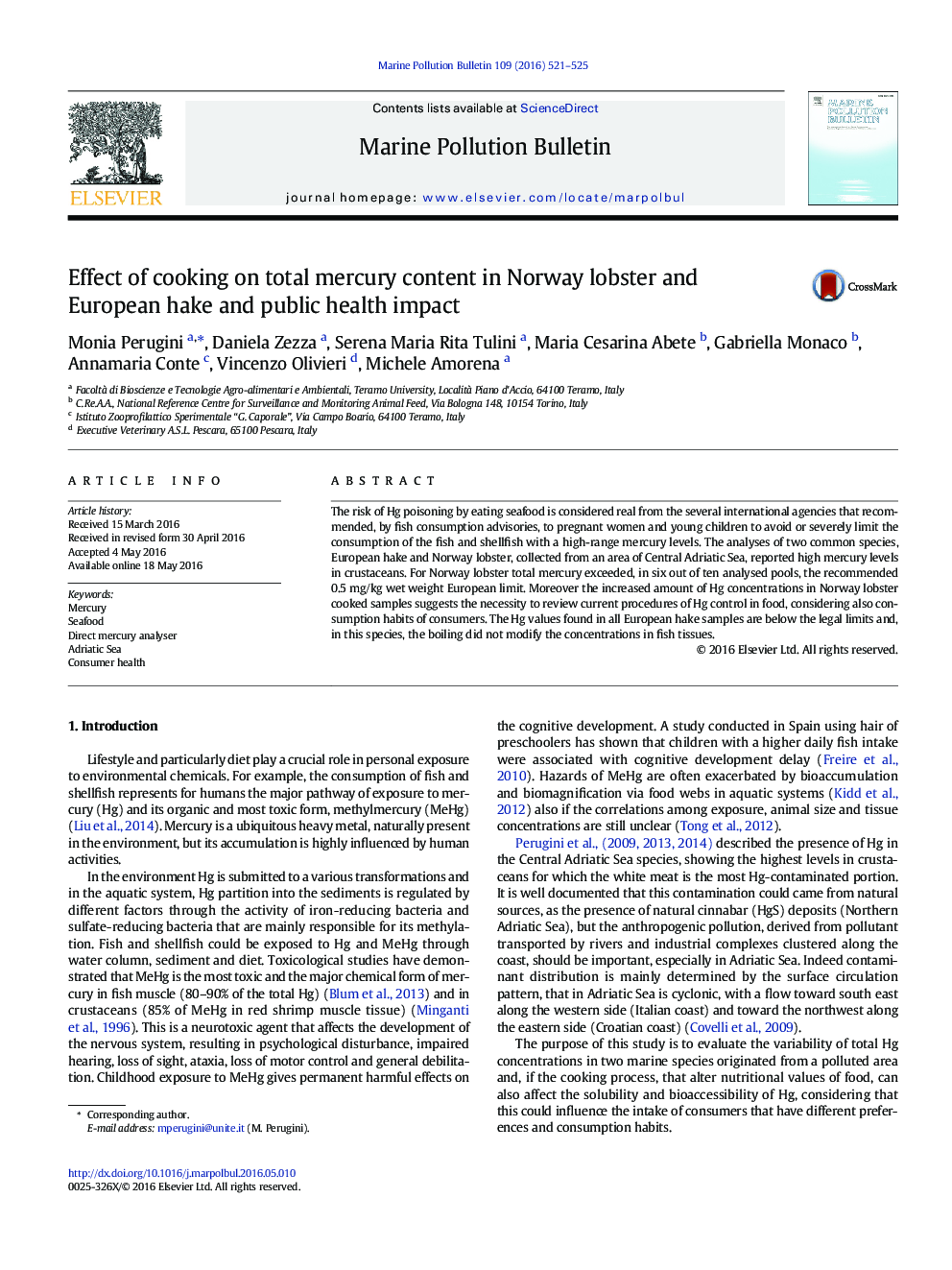| Article ID | Journal | Published Year | Pages | File Type |
|---|---|---|---|---|
| 4476431 | Marine Pollution Bulletin | 2016 | 5 Pages |
•We compared the mercury levels in two common marine species.•The geographical origin of fish or shellfish influences the mercury content.•The boiling process in crustaceans produces an increase of mercury concentrations.•Inform the consumers about the risks associated to the use of fish and shellfish
The risk of Hg poisoning by eating seafood is considered real from the several international agencies that recommended, by fish consumption advisories, to pregnant women and young children to avoid or severely limit the consumption of the fish and shellfish with a high-range mercury levels. The analyses of two common species, European hake and Norway lobster, collected from an area of Central Adriatic Sea, reported high mercury levels in crustaceans. For Norway lobster total mercury exceeded, in six out of ten analysed pools, the recommended 0.5 mg/kg wet weight European limit. Moreover the increased amount of Hg concentrations in Norway lobster cooked samples suggests the necessity to review current procedures of Hg control in food, considering also consumption habits of consumers. The Hg values found in all European hake samples are below the legal limits and, in this species, the boiling did not modify the concentrations in fish tissues.
Graphical abstractFigure optionsDownload full-size imageDownload as PowerPoint slide
